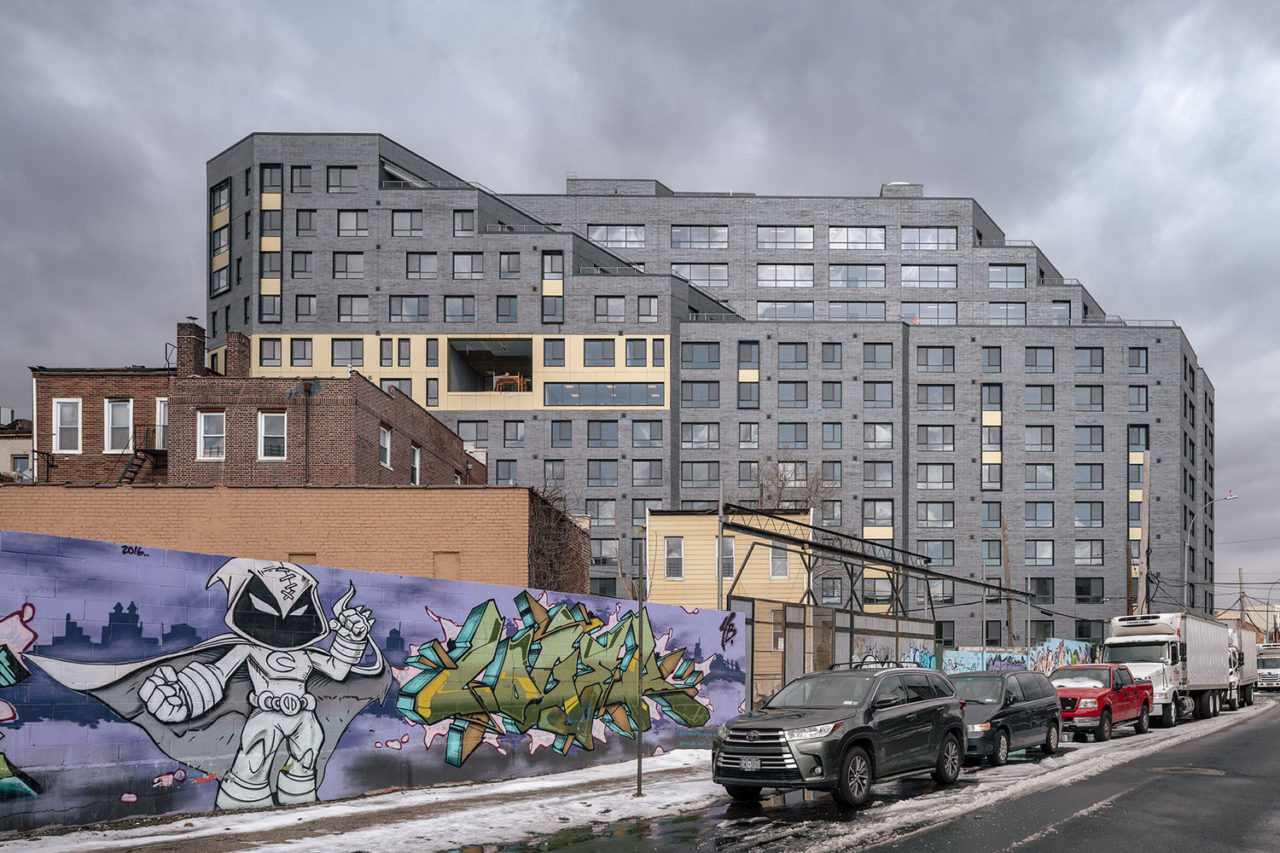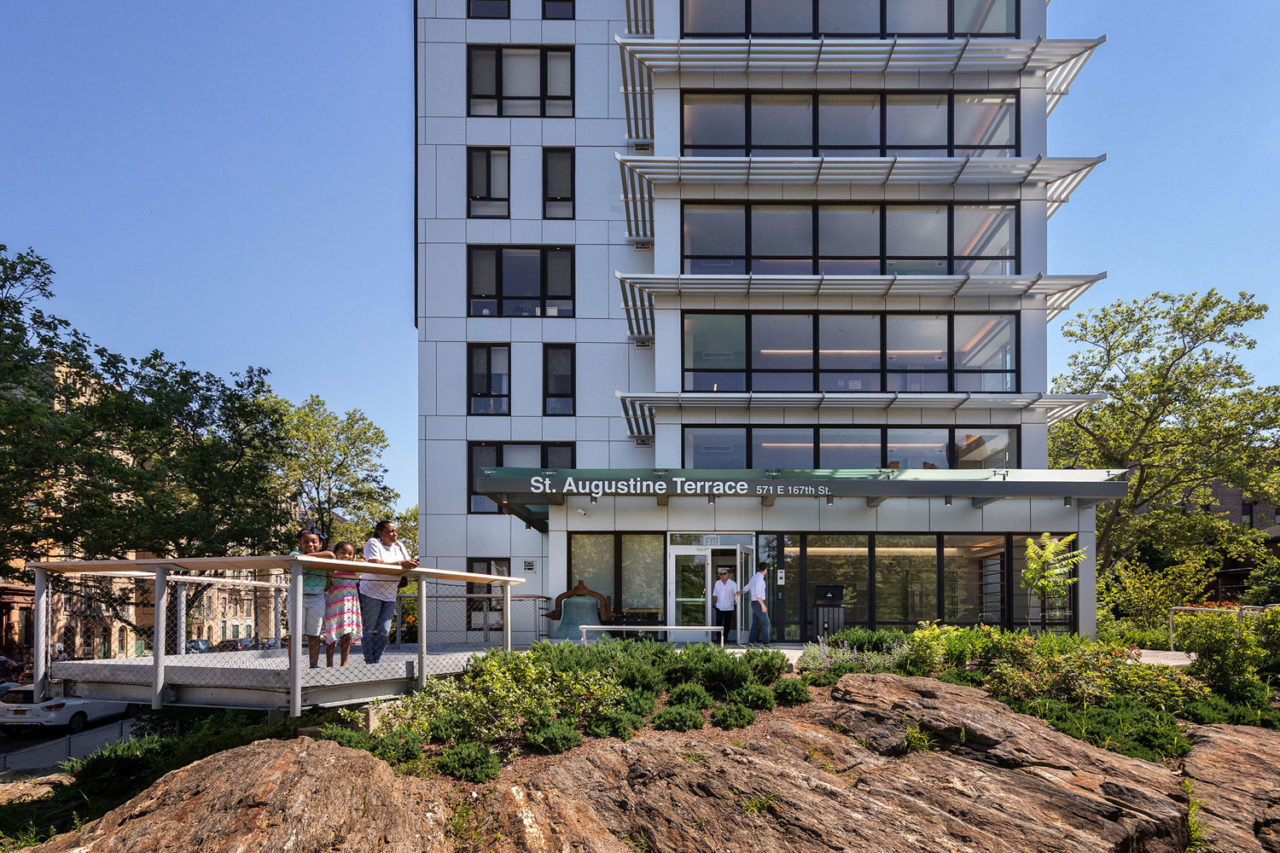by: AIA New York
For over 20 years, Fernando Villa, FAIA, LEED AP BD+C, has designed high-quality and environmentally sustainable, affordable, and supportive housing in New York City and surrounding areas. As Magnusson Architecture and Planning (MAP)’s principal and leading designer, he is committed to connecting design excellence and innovation with positive social impact. In his dedication to elevating standards for the affordable and supportive housing, Villa has brought aesthetic achievement and environmentally sustainable design to mission-driven projects empowering residents and challenging the stigma of this building typology.
This year, the Jury of Fellows of the AIA elevated Villa to its prestigious College of Fellows in the second category of Fellowship, which recognizes architects who have made efforts “To advance the science and art of planning and building by advancing the standards of architectural education, training, and practice,” according to the organization’s definition. Only three percent of the AIA’s membership is distinguished with Fellowship.
Q: What has been particularly challenging in your recent work?
The pandemic, which forced everyone to work from home, upended our whole way of doing things as an architecture firm. Very quickly we learned how to do everything we could remotely, from collaborating on design to engaging clients, but then we also had to figure out how to continue to do certain things in-person while keeping our staff safe in the process. This year, we addressed big-picture concerns in ways that we hadn’t before and, as difficult as the experience has been, I think our efforts to connect and support each other have actually made us feel closer.
Q: What are some of your favorite recent projects that you’ve worked on?
A few of my favorite recently completed projects include MLK Plaza, which won an AIA National Housing award, and St. Augustine Terrace, which won an AIA New York Design Award. Both are affordable housing, but MLK Plaza also includes more than 30 apartments for formerly homeless households. At St. Augustine, about one third of the units are supportive housing. Creston Parkview, which is affordable housing, and Webster Green, which is affordable and supportive, are also two great ones both right near large public parks. I should also mention Clarke Place Senior Residences which is affordable senior housing opening this spring. In an effort to support the development of community within that building, we’ve incorporated a variety of shared spaces, large and small, indoor and outdoor. I’m looking forward to seeing how people use the amenities.
Q: What do you see as an architect’s role—and responsibility—within our culture?
An architect’s role and responsibility within our culture is similar, I think to what everyone else’s should be—to use your position, education, skillsets, and talents to make the world better. For architects specifically, I’d say that because design can bring a lot of good—like joy, convenience, health, and security—it is our responsibility to make sure those things make it to as many people as possible, particularly those who can least afford it. In short, it’s our responsibility to be inclusive.
Q: What do you think are the biggest challenges, or opportunities, facing cities today?
Unfortunately, there are a lot of challenges particularly in terms of housing. For a while now many cities simply have not produced enough homes. That drives a housing affordability crisis. There is also general income inequality where you have so many people who work multiple jobs and still can’t afford basic necessities. And then there is the potential for a wave of homelessness coming out of the pandemic with people who have lost jobs and are behind on rent.
But I think investing in sustainability is a huge opportunity. We can build more high-quality, affordable housing and create new, good-paying jobs, that for the most part need to be done locally. And, of course, you’re also making the future much more livable. Cities can lead the way on this.
Q: What are your greatest sources of inspiration?
While I definitely look at what’s happening in contemporary urban architecture and design, ultimately, I think my greatest sources of inspiration are the missions of my clients. For the most part they are nonprofit housing developers and social service providers who support those most in need. The meaning behind their work drives my commitment and adds layers of purpose to my process.
Design can incorporate these values literally, in the form of beautiful, high-quality spaces that show residents that they matter, or it can be more of a metaphor as it was with St. Augustine Terrace. Built on the site of a former church for our client NY Catholic Homes, an affiliate of the Archdiocese of New York, the concept is based on the idea that a house of worship is a “beacon of light” in its community. From that came 12 floors of large, fully glazed elevator lobbies which, in addition to offering tremendous views for residents during the day, become a glowing tower at night, bringing light to the adjacent park and street corners.
Editors’ Note: This feature is part of a series celebrating the members of the American Institute of Architects (AIA) New York Chapter who are elevated each year to the AIA College of Fellows, an honor awarded to members who have made significant contributions to both the profession and society. Learn more about Fellowship here.













